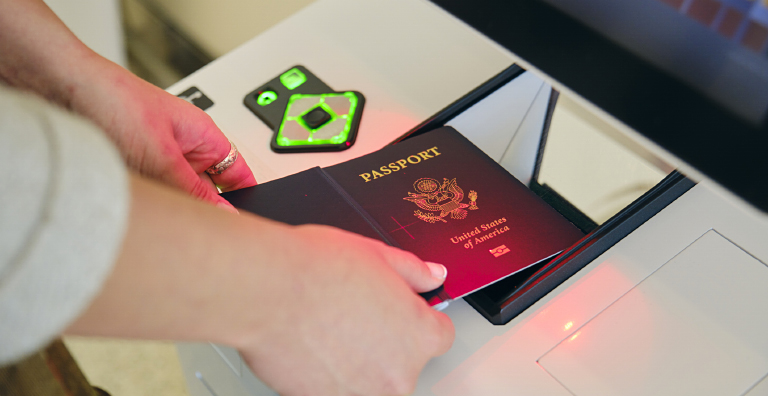In today’s increasingly digitized world, the demand for efficient document recognition systems has skyrocketed. Central to this is the MRZ reader, which plays a critical role in scanning machine-readable zones on documents such as passports, ID cards, and visas. These zones contain vital information encoded in a standardized format that machines can easily interpret, ensuring rapid and accurate identity verification. With the growing complexity of international travel, border control, and digital security measures, document recognition has become an indispensable part of various industries, especially in government, banking, and transport sectors.
Document recognition refers to the ability of a system to scan, interpret, and process information from physical documents, converting them into a digital format. This technology is powered by optical character recognition (OCR) and machine learning algorithms. These systems have become adept at recognizing various types of documents, including those with security features such as holograms, watermarks, and ultraviolet ink. MRZ readers form a crucial part of this process, particularly in situations where quick, reliable verification of identity is essential. For instance, when travelers pass through airport checkpoints, MRZ readers scan the passport’s machine-readable zone to instantly extract the individual’s personal details and compare them against a database of authorized individuals.
Over time, document recognition technology has evolved to accommodate various forms of identification. Today’s systems can accurately scan and interpret not only travel documents but also driver’s licenses, identity cards, and birth certificates. Advanced MRZ readers have expanded their capabilities to scan multiple document types at once, boosting efficiency and reducing the time needed for manual verification. This flexibility is vital in sectors such as banking and healthcare, where verifying customer or patient information must be done quickly and accurately. By minimizing human error, document recognition systems enable businesses to streamline processes while adhering to stringent regulatory requirements.
Beyond airports and banks, document recognition is now a critical feature in many everyday applications. For example, opening a new bank account or accessing government services often requires the submission of identification documents, which are increasingly scanned using MRZ readers. In this case, the information extracted is used for real-time validation and helps establish a secure digital identity. The use of document recognition extends further into the corporate world, where employee verification is necessary for secure access to facilities and systems. Here, MRZ readers ensure that employees’ credentials match the information on file, bolstering internal security.
While the role of MRZ readers is central to document recognition, other technologies contribute to the broader system. Machine learning algorithms enable systems to “learn” and improve accuracy over time, particularly when faced with unfamiliar or complex document formats. These algorithms can analyze patterns in scanned documents and refine the system’s ability to detect and interpret text and symbols. Similarly, neural networks are used to enhance OCR functionality, especially in recognizing non-standard fonts or damaged documents. As a result, modern document recognition systems are far more robust than their earlier iterations, making them suitable for use across various sectors.
However, with these advancements come challenges, particularly regarding privacy and data security. The digitization of personal documents means that sensitive information is at risk of being exposed if the system is not adequately secured. As more businesses adopt document recognition systems, the need for comprehensive cybersecurity measures increases. Implementing encryption, multi-factor authentication, and regular system audits are essential steps in safeguarding data within these systems. Moreover, regulations such as GDPR emphasize the need for transparency and accountability when handling personal data, putting pressure on companies to prioritize data security alongside efficiency.
In conclusion, the integration of document recognition systems and MRZ readers into daily operations has significantly enhanced the accuracy, speed, and reliability of identity verification processes. The ability to scan and interpret various types of documents in real-time has streamlined operations in airports, banks, and other sectors, reducing human error and improving overall security. However, the increasing reliance on these systems also underscores the importance of safeguarding personal information and adhering to privacy regulations. As the technology continues to evolve, we can expect even greater advancements in the field of document recognition, ultimately leading to more efficient and secure processes across industries.

